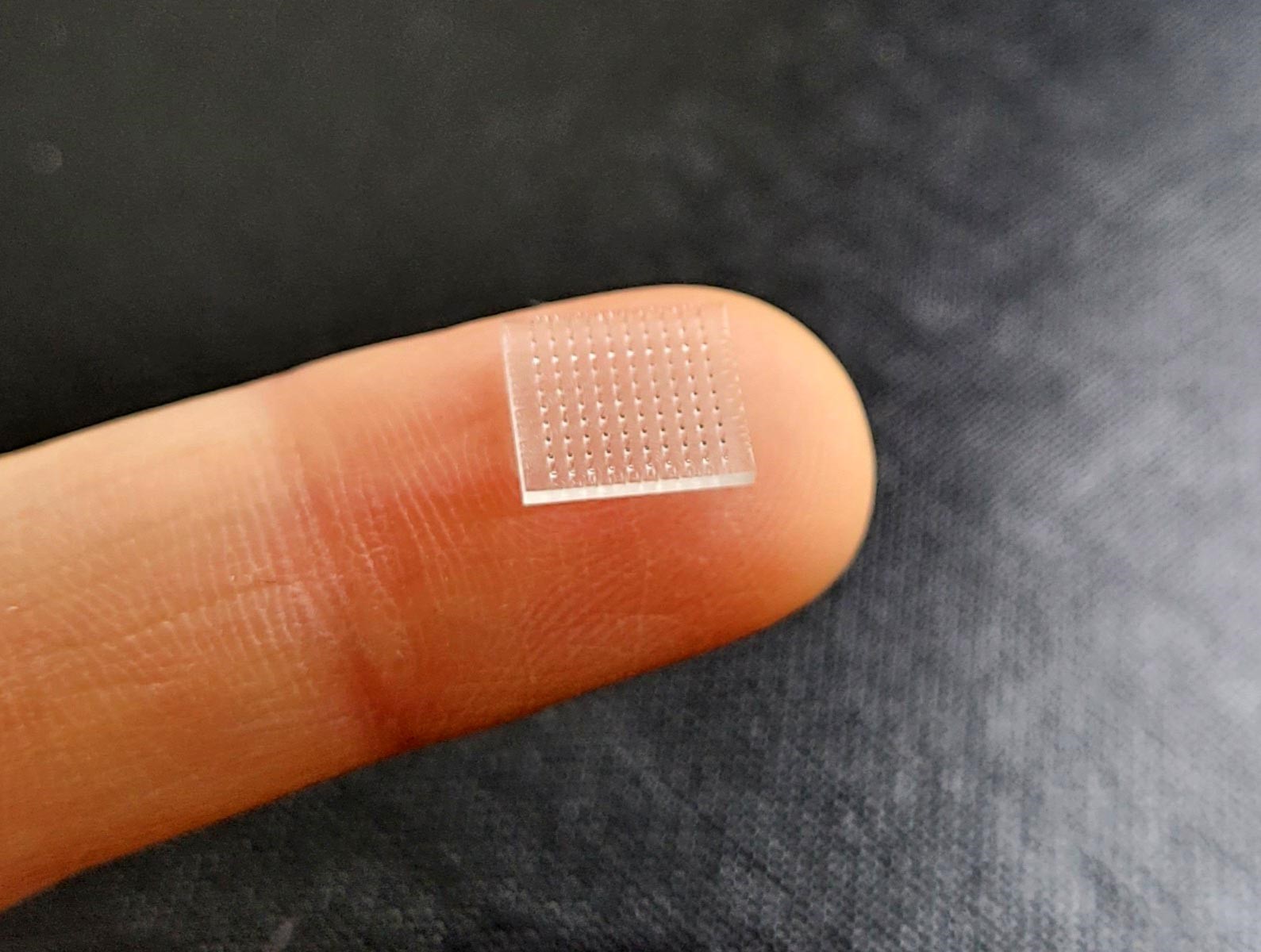
3D printing vaccine patch provides greater protection than a shot
Scientists have developed a microneedle 'vaccine patch' that promises a much greater immune response than traditional vaccine shots – and all without the potential pain and anxiety associated with conventional needles.
The advanced 3D-printing technique called continuous liquid interface production, using ultraviolet light and a special resin to create the patches – patches that are consistent in size, shape, and needle spacing, no matter how many are made.
Another advantage of these patches is that they can be self-administered – there's no need to book an appointment with a doctor or a nurse to get your shot. The short needles only have to penetrate just below the surface layer of the skin, and not all the way through it like traditional vaccines.
The drugs get directly delivered in the vicinity of skin immune cells. With a more efficient delivery system, it's possible that dosages can be lowered accordingly.
In lab tests, researchers found that their patch generated a T-cell and antigen-specific antibody response 50 times greater than a traditional, subcutaneous injection delivered.
They demonstrated that 3D-printed microneedle delivery resulted in enhanced cargo retention in the skin, activation of immune cells, and more potent humoral and cellular immune responses as compared with traditional vaccination routes.
The design and approach can be adapted to cover vaccines for flu, measles, hepatitis, and even COVID-19. There's no need for special handling or refrigeration in terms of transportation, which could help boost vaccination rates. The patches can even use recent improvements in the field to combine multiple drugs on the same patch.
Researchers hope to set the foundation for even more rapid global development of vaccines, at lower doses, in a pain and anxiety-free manner.
 English
English Arabic
Arabic


